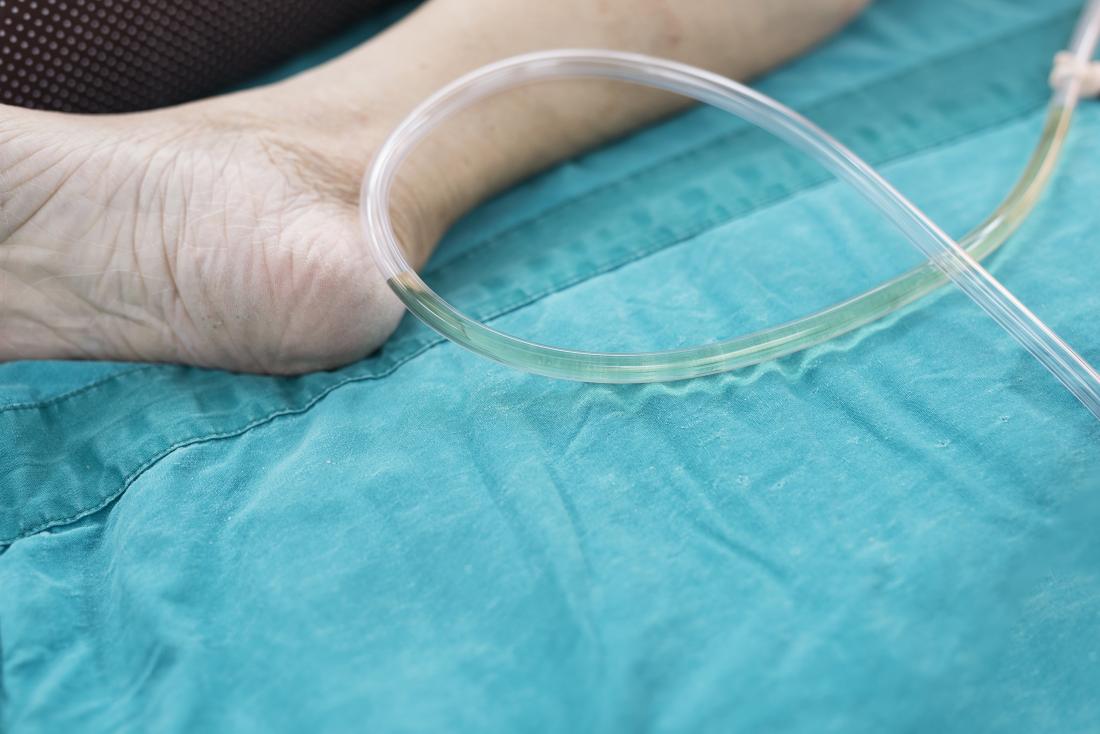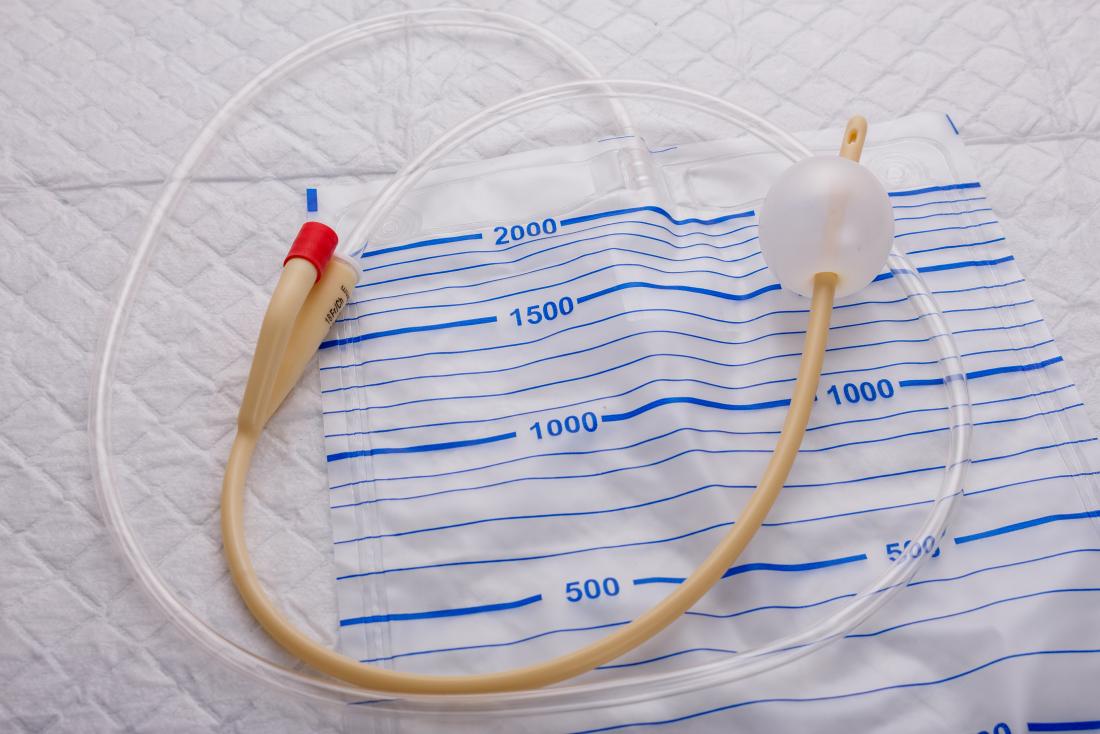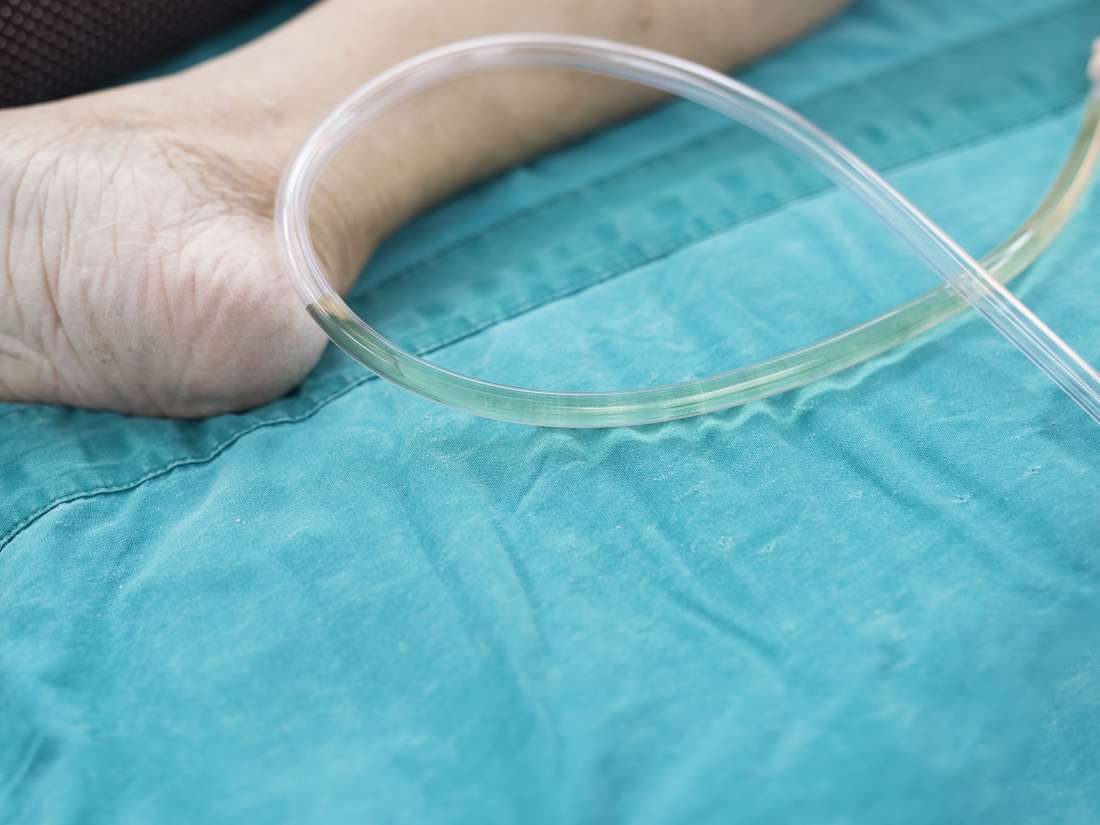This article outlines the different types of urinary catheter and provides advice on how to avoid side effects.
Uses

A person may need a urinary catheter if they have an injury to the urethra, an enlarged prostate, or kidney stones.
A doctor may recommend a urinary catheter for a person who has difficulties when urinating. Reasons for needing a catheter can include:
- a blockage in the urethra, which is the tube that carries urine out of the bladder
- injury to the urethra
- an enlarged prostate in males
- birth defects affecting the urinary tract
- kidney, ureter, or bladder stones
- bladder weakness or nerve damage
- tumors within the urinary tract or reproductive organs
A healthcare provider may also insert a urinary catheter:
- to accurately measure urine output in critically ill people
- to drain the bladder before, during, or after a person has surgery
- during childbirth, to drain the women’s bladder after an epidural anesthetic
- to deliver medication directly into a person’s bladder
- for treating a person with urinary incontinence if other treatments have not been successful
Intermittent catheter
The intermittent catheter, or a standard catheter, is a thin, flexible tube that a person temporarily inserts into their bladder through the urethra.
The external end of the tube may be left open, allowing the urine to drain into a receptacle. Another option is to attach the tube to an external drainage bag, which collects the urine.
What to expect
Once a person has emptied their bladder, they need to remove the catheter. It is necessary to remove the old catheter and insert a new one several times per day to empty the bladder.
A healthcare provider will teach the person how to do this correctly.
Side effects
Intermittent catheters are usually prelubricated to reduce discomfort during insertion.
Urinary tract infections (UTIs) are a common potential side effect of using an intermittent catheter. The risk of developing a UTI increases with longer-term use of the catheter.
According to Dr. Tomas L. Griebling, a professor of urology at the University of Kansas, intermittent catheters are less likely to cause infections than indwelling catheters.
Other possible side effects of using intermittent catheters include:
- Hematuria. This is the presence of red blood cells in the urine, which can cause the urine to appear red or brown. Hematuria is common when a person first starts using an intermittent catheter, but persistent hematuria may indicate a UTI.
- Bladder stones. These are common in people who use an intermittent catheter on a long-term basis.
- Urethral strictures. This is a narrowing of the urethra that can result from repeated trauma. People who insert their own intermittent catheters repeatedly over many months have a higher risk of urethral strictures.
Indwelling catheters

An indwelling catheter will remain in place for days or weeks.
An indwelling catheter is similar to an intermittent catheter but remains in place for a period of days or weeks.
One end of the indwelling catheter has a deflated balloon attached. A healthcare provider will insert this end into the bladder and then inflate the balloon with sterile water to hold the catheter in place.
There are two main types of indwelling catheter, which have different insertion techniques:
- Urethral catheter. Also called a Foley catheter, the healthcare provider inserts this type through a person’s urethra.
- Suprapubic catheter. A doctor will surgically insert the suprapubic catheter through a small hole a few inches below the belly button. This operation will take place in the hospital while the person is under a local or a light general anesthetic.
What to expect
Indwelling catheters typically drain into a collection bag. A person can strap the bag to the inner thigh or attach it to a stand in a position lower than the bladder.
It is important to empty a drainage bag before it becomes full. For most people, this will mean emptying the bag every 2–4 hours. A person should also attach a clean, unused drainage bag twice per day and attach a larger bag at night.
Some indwelling catheters use a valve instead of a bag. Keeping the valve closed allows the bladder to fill up.
A person can then open the valve to empty their bladder and drain the urine out into a receptacle. Some people find this more convenient than using a drainage bag.
Side effects
Many people find suprapubic catheters more comfortable than urethral catheters. They are also less likely to cause an infection than a urethral catheter.
However, both types of indwelling catheter can cause the following side effects:
Bladder spasms
It is quite common for people with indwelling catheters to experience bladder spasms. This occurs when the bladder attempts to pass out the balloon section of the catheter. A doctor may prescribe medications to reduce the frequency and intensity of these spasms.
Blockages
People with an indwelling catheter may notice debris in the catheter tube. Though normal, these mineral deposits can sometimes block the catheter and prevent drainage.
It is essential for a person to notify a healthcare provider immediately if their catheter becomes blocked, or if they are passing blood clots or large pieces of debris.
Pain and discomfort
Long-term use of the indwelling catheter can cause pain and discomfort. It is important to discuss this with a doctor, who will be able to provide or advise on appropriate pain relief.
External catheters
Some males have the option of using an external catheter. This is a condom-like device that fits over the penis. A tube attached to the catheter collects urine into a drainage bag.
Doctors usually recommend external catheters for males with incontinence who do not experience urinary blockages or retention and can use the catheter themselves.
What to expect
Because external catheters do not enter the urethra, they tend to cause very little discomfort. Compared with indwelling catheters, they are also less likely to cause a UTI.
Although external catheters for females do exist, they are rare in clinical settings due to concerns over their safety and effectiveness.
These catheters are generally poor at collecting urine and can cause damage to the surrounding skin and vaginal mucosa.
Side effects
External catheters are for short-term use only. Longer-term use increases the risk of:
- UTIs
- damage to the penis due to friction with the condom-like device
- a blockage in the urethra
Living with a catheter
Some people may find living with a catheter challenging and uncomfortable at first. However, as people become more accustomed to the catheter, they generally find that it has less impact on their daily lives.
This section provides tips on how to prevent and overcome some of the possible complications of catheter use.
Preventing infections

Symptoms of a CAUTI can include a high temperature.
The main disadvantage of using a catheter is that it can allow certain bacteria to enter the body and cause infection.
According to the Centers for Disease Control and Prevention (CDC), urinary catheters are responsible for around 75 percent of UTIs that people acquire in the hospital. The risk of infection is highest when using an indwelling catheter.
Doctors refer to a UTI that results from catheter use as a catheter-associated UTI (CAUTI). Symptoms of a CAUTI can include:
- pain in the lower abdomen or groin area
- a high temperature
- a burning sensation during urination
- more frequent urination
A person can reduce their risk of developing a CAUTI by:
- washing their hands thoroughly with soap and warm water before and after touching catheter equipment
- keeping the skin around the catheter entrance clean by washing it with mild soap and water twice per day
- ensuring that urine collection bags are kept below the level of the bladder, as this will help prevent blockages
- not lying on the catheter, as this can prevent the flow of urine through the tube
- ensuring that there are no twists or kinks in the tubing, as blockages can raise the risk of infection
- keeping hydrated by drinking one or two glasses of liquid every 2 hours
Other activities
It is possible for a person using a urinary catheter to carry out most of their regular activities. A doctor will advise when it is safe for a person to resume working, exercising, or having sex.
Many people who use a catheter are concerned about the effect that it may have on their sex life. Generally, however, people with an intermittent or suprapubic catheter can have sex as normal. Those with a urethral catheter may find sex more difficult, but it is still possible.
Males who use an external catheter can usually remove the sheath during sex or place a standard condom over the top of it. In some cases, it is possible to temporarily remove the tube and drainage bag.
People who use a drainage bag with their catheter may wish to talk to their healthcare provider about the possibility of switching to a valve system. This can make sex easier and more comfortable.
Summary
A urinary catheter is an important aid for people who have difficulty passing urine. There are several different types available, and a person should talk to their doctor about the type that is best suited to their needs.
A common complication of using any type of catheter is an increased risk of UTIs. However, a person can reduce this risk by practicing good personal hygiene and catheter care, as well as learning how to use the equipment correctly.
People should consider talking to a medical professional if they experience any persistent pain or discomfort associated with the catheter. They can offer advice on how to make living with a catheter more comfortable.
